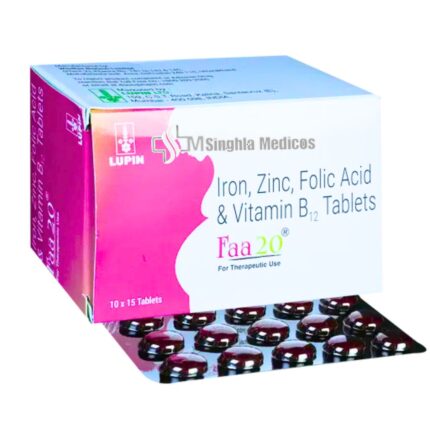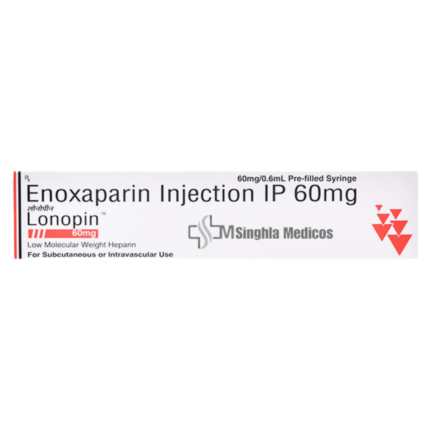

Oxra S 10mg/100mg Tablet
₹295.00 Original price was: ₹295.00.₹265.50Current price is: ₹265.50.
![]() Prescription Required
Prescription Required
Salt : Dapagliflozin (10mg) + Sitagliptin (100mg)
Manufacturer : Sun Pharmaceutical Industries Ltd
Packing : 15 tablets in 1 strip
Product Introduction
Oxra S 10mg/100mg Tablet is a combination medication primarily used in the management of type 2 diabetes mellitus. This pharmaceutical preparation integrates two potent antidiabetic agents: Dapagliflozin (10mg) and Saxagliptin (100mg). Dapagliflozin belongs to the class of sodium-glucose co-transporter 2 (SGLT2) inhibitors, while Saxagliptin is a dipeptidyl peptidase-4 (DPP-4) inhibitor. The synergy of these two components offers a multifaceted approach to controlling blood sugar levels, thus enhancing overall glycemic control in diabetic patients.
Dapagliflozin works by inhibiting the SGLT2 protein in the kidneys, which is responsible for glucose reabsorption. By blocking this protein, Dapagliflozin promotes the excretion of excess glucose through urine, thereby lowering blood glucose levels. Saxagliptin, on the other hand, increases the levels of incretin hormones, which are naturally produced by the body to stimulate insulin release in response to meals and reduce the amount of glucose produced by the liver. Together, these mechanisms help maintain blood sugar levels within a normal range and prevent the complications associated with diabetes.
Oxra S 10mg/100mg Tablet is usually prescribed when monotherapy with either Dapagliflozin or Saxagliptin, along with diet and exercise, does not adequately control blood sugar levels. It is an oral medication, typically taken once daily, with or without food.
Uses of Oxra S 10mg/100mg Tablet
The primary use of Oxra S 10mg/100mg Tablet is to improve glycemic control in adults with type 2 diabetes mellitus. This combination therapy is particularly beneficial for individuals who struggle to manage their blood sugar levels through lifestyle modifications and monotherapy. The dual action of the medication targets different aspects of glucose regulation, offering a more comprehensive approach to diabetes management.
In addition to its primary use, Oxra S 10mg/100mg Tablet may also provide secondary benefits, such as weight loss and a reduction in blood pressure, due to the mechanism of action of Dapagliflozin. These effects can contribute to the overall cardiovascular health of diabetic patients, who are at a higher risk of heart disease.
Benefits of Oxra S 10mg/100mg Tablet
- Enhanced Glycemic Control: The combination of Dapagliflozin and Saxagliptin provides a robust reduction in blood sugar levels, addressing both fasting and postprandial glucose.
- Weight Management: Dapagliflozin promotes glucose excretion through urine, which can result in modest weight loss. This is particularly beneficial for overweight or obese diabetic patients.
- Cardiovascular Benefits: Both components have been associated with a reduced risk of cardiovascular events. Dapagliflozin, in particular, has shown potential in lowering the incidence of heart failure.
- Blood Pressure Reduction: Dapagliflozin can lead to a slight decrease in blood pressure, contributing to overall cardiovascular health.
- Convenient Dosing: The once-daily dosing regimen enhances patient compliance and simplifies the management of diabetes.
Side Effects of Oxra S 10mg/100mg Tablet
While Oxra S 10mg/100mg Tablet offers numerous benefits, it is also associated with certain side effects. Patients should be aware of these potential adverse effects and consult their healthcare provider if they experience any unusual symptoms.
- Genital and Urinary Tract Infections: Dapagliflozin increases glucose excretion in urine, creating an environment that can promote the growth of bacteria and yeast, leading to infections. Common symptoms include itching, burning, and discomfort.
- Hypoglycemia: Although less common with Dapagliflozin and Saxagliptin compared to other antidiabetic medications, hypoglycemia (low blood sugar) can occur, especially when used in combination with other glucose-lowering agents.
- Dehydration: The diuretic effect of Dapagliflozin can lead to increased urination and dehydration. Patients should ensure adequate fluid intake to avoid this side effect.
- Nausea and Vomiting: Some patients may experience gastrointestinal discomfort, including nausea and vomiting, particularly when starting the medication.
- Pancreatitis: Saxagliptin has been associated with an increased risk of pancreatitis (inflammation of the pancreas). Symptoms include severe abdominal pain, nausea, and vomiting.
- Allergic Reactions: Rarely, patients may experience allergic reactions such as rash, itching, swelling, and difficulty breathing. Immediate medical attention is required in such cases.
- Joint Pain: DPP-4 inhibitors like Saxagliptin have been linked to joint pain in some patients, which can vary in severity.
References
Disclaimer
Singhla Medicos primary intention is to ensure that its consumers get information that is reviewed by experts, accurate and trustworthy. The information and contents of this website are for informational purposes only. They are not intended to be a substitute for professional medical advice, diagnosis, or treatment. Please seek the advice of your doctor and discuss all your queries related to any disease or medicine. Do not disregard professional medical advice or delay in seeking it because of something you have read on Singhla Medicos. Our mission is to support, not replace, the doctor-patient relationship.
Shipping Policy
We ship across India. Note – this is subject to change as per Company Wishes. Packages will be shipped in 24 working hours. we are closed on Sundays and will reach you in the next 2-4 days post shipping. We give the estimated time of delivery on the shipping page. However, these are indicative and depend on our shipping partner.
Delivery
The delivery times are subject to location, distance, and our logistics partners. We are not liable for any delays in delivery by the courier company/postal authorities but will help you track down a package through our partner courier services.
Your purchases may reach you from various locations in more than one package. But rest assured, you will be charged one delivery fee for the entire order. As soon as your package ships, we will email you your package tracking information.
We are bound in coverage by their reach even though we use some of India’s largest logistics companies for shipping. In case your address is in a location not served by them we would contact you to find an alternative solution to make your products reach you.












Reviews
There are no reviews yet.